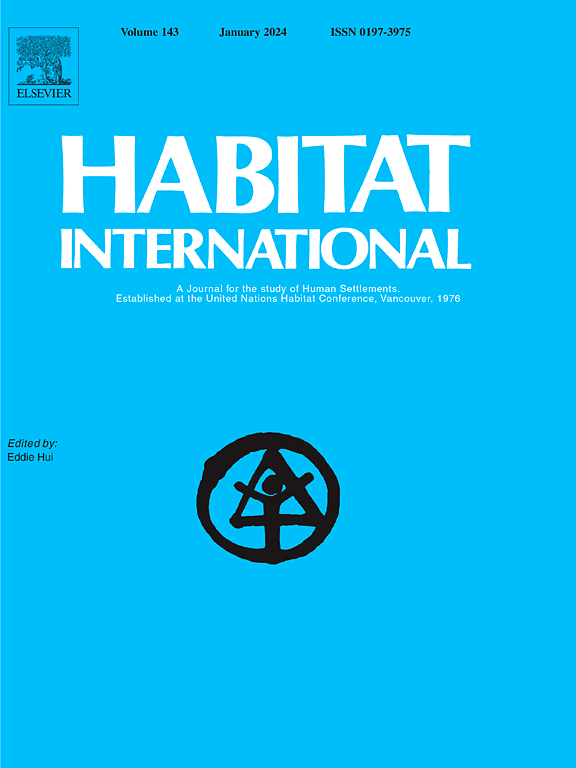A digital twin platform for the cocreation of urban regeneration projects. A case study in Morocco
IF 6.5
1区 经济学
Q1 DEVELOPMENT STUDIES
引用次数: 0
Abstract
With increasing trends of suburbanization and polycentric growth, many cities worldwide experience shifts in economic activities to the outskirts leaving inner-city areas blighted with unemployment, inadequate services, substandard housing, and deteriorating streets and public spaces. Urban regeneration strategies looking to revamp these dying underutilized urban centers into thriving communities face complex challenges ranging from innovative design and funding models to public participation in planning and ensuring affordable and accessible housing and services. This study explores how sustainable urban regeneration projects can leverage digital technologies to create opportunities for creative government-community collaborations to enable residents with opportunities to contribute to the prosperity of their neighborhoods and cities. Our paper specifically demonstrates the application of powerful digital twin technology within a case study of a Moroccan neighborhood undergoing rapid degradation, presenting a socially sustainable yet technologically innovative approach to co-creating urban regeneration strategies based on collaborative citizen engagement. We employ a focus group and in-depth interviews with local policymakers leading Moroccan urban regeneration projects to identify key issues and challenges in the design, implementation, and impact evaluation processes and subsequently examine how the newly developed digital twin platform can bridge these gaps identified by policymakers. This study advances knowledge for researchers and local governments worldwide who seek to harness digital twins for design, collaboration, and synergistic strategies in the urban sector.
一个数字孪生平台,用于共同创建城市更新项目。以摩洛哥为例
随着郊区化和多中心增长的趋势日益明显,世界上许多城市的经济活动都在向郊区转移,而内城地区则充斥着失业、服务不足、住房不合标准、街道和公共空间恶化等问题。城市再生战略寻求将这些垂死的未充分利用的城市中心改造成繁荣的社区,面临着从创新设计和融资模式到公众参与规划和确保负担得起和可获得的住房和服务的复杂挑战。本研究探讨了可持续城市更新项目如何利用数字技术为创造性的政府-社区合作创造机会,使居民有机会为其社区和城市的繁荣做出贡献。我们的论文特别展示了强大的数字孪生技术在一个正在快速退化的摩洛哥社区的案例研究中的应用,提出了一种社会可持续且技术创新的方法,以协同公民参与为基础共同制定城市再生战略。我们采用焦点小组和对摩洛哥城市更新项目的当地政策制定者进行深入访谈,以确定设计、实施和影响评估过程中的关键问题和挑战,随后研究新开发的数字孪生平台如何弥合政策制定者确定的这些差距。这项研究为世界各地的研究人员和地方政府提供了知识,他们希望利用数字孪生来进行城市部门的设计、协作和协同战略。
本文章由计算机程序翻译,如有差异,请以英文原文为准。
求助全文
约1分钟内获得全文
求助全文
来源期刊

Habitat International
Multiple-
CiteScore
10.50
自引率
10.30%
发文量
151
审稿时长
38 days
期刊介绍:
Habitat International is dedicated to the study of urban and rural human settlements: their planning, design, production and management. Its main focus is on urbanisation in its broadest sense in the developing world. However, increasingly the interrelationships and linkages between cities and towns in the developing and developed worlds are becoming apparent and solutions to the problems that result are urgently required. The economic, social, technological and political systems of the world are intertwined and changes in one region almost always affect other regions.
 求助内容:
求助内容: 应助结果提醒方式:
应助结果提醒方式:


